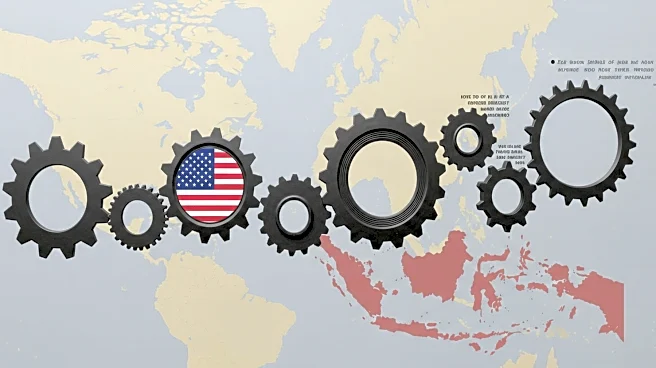What is the story about?
What's Happening?
President Trump has implemented a new round of tariff hikes on imports, which took effect recently. These tariffs are expected to make imported goods from countries like China, Taiwan, Vietnam, and Malaysia more expensive in the United States. The tariffs on goods from these countries have nearly doubled, with rates increasing from 10% to 19% or 20%. This move is part of ongoing trade negotiations, and if a deal with China is not reached by August 12, tariffs could rise even further. Businesses have been absorbing some of the costs, but they may now pass these expenses onto consumers, leading to higher prices for electronics, clothing, watches, shoes, alcohol, furniture, and toys.
Why It's Important?
The tariff hikes are significant as they directly impact consumer prices in the U.S., potentially leading to inflationary pressures. Industries reliant on imported goods, such as electronics and apparel, may face increased costs, affecting their profitability and pricing strategies. Consumers could experience higher prices for everyday items, which may alter spending habits and affect economic growth. The tariffs also influence international trade relations, particularly with countries heavily involved in exporting goods to the U.S., and could lead to retaliatory measures.
What's Next?
If a trade deal with China is not reached by the specified deadline, tariffs could increase further, exacerbating the impact on prices. Businesses may continue to adjust their strategies, possibly seeking alternative suppliers or increasing domestic production to mitigate costs. Consumers might respond by reducing spending or seeking cheaper alternatives. The situation could also prompt further negotiations or policy changes aimed at resolving trade tensions.
AI Generated Content
Do you find this article useful?











